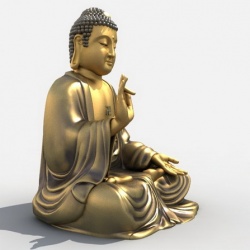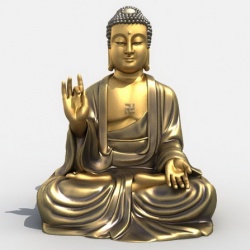Tibetan Buddhist Philosophy
Since the mid-1980s, the study of Tibetan Buddhist philosophy has greatly expanded. The volume of available publications now surpasses the scope even of most specialists in the field. Under these circumstances, the present bibliography aspires not to present the area comprehensively, but instead to offer a selection of materials that, in the judgment of this writer, will enable those beginning research to navigate effectively in this domain. Scholars of Tibetan thought are not wholly agreed as to what counts as “philosophy” within Tibetan traditions. There is no Tibetan term that is a straightforward equivalent to the Western expression, though such distinctions as that between rigs pa’i rjes ’brangs (followers of reason) and dad pa’i rjes ‘brangs (followers of faith) do mark out areas of thought and practice that significantly overlap with Western conceptions of philosophy as opposed to religion, mysticism, or faith. With this in mind, there are some who favor a narrow definition of philosophy in Tibet, stressing above all those traditions emphasizing education through debate and works concerning Buddhist logic and epistemology (Skt. pramāṇa, Tib. tshad ma), Madhyamaka (Tib. dbu ma), the analysis of philosophical systems (Skt. siddhānta, Tib. grub mtha’), and similar subjects. (For an introduction to the Tibetan educational system and the major departments of philosophical thought, refer to Dreyfus 2003, cited under General Overviews.) On the other hand, there are those who insist that important philosophical issues are often addressed, and trenchantly so, in works emanating from outside the debate schools, most notably within the contemplative traditions of the “Great Seal” (Mahāmudrā) and “Great Perfection” (Dzogchen, rdzogs chen). The late H. V. Guenther, several of whose works are cited in this entry, was the pioneering figure in this latter approach. Many of those who have enthusiastically contributed to the translation of Tibetan Buddhist philosophical texts in recent years have had no appreciable background in philosophy before encountering its Tibetan versions, often as a result of their studies under the direction of contemporary Tibetan religious teachers. One result has been a remarkable effort to translate the writings favored by these teachers, as well as the discourses of the teachers themselves. Although much that is of genuine philosophical interest is to be found in some of these works, the expression of ideas that we find in them is often naive with respect to Western philosophical usage. Accordingly, the selection of translations used here has been limited, emphasizing materials that are exceptionally informed by sufficient philosophical background so as to render philosophical concepts in a relatively limpid manner, together with a number of texts of such outstanding importance within the Tibetan tradition that they merit the effort required to read them even when the translations fail to be adequately perspicacious philosophically. It should be noted, too, that much of Tibetan philosophy is scholastic in the strict sense that it is based on and expresses itself in scholia, comments and glosses on the works of past masters (in Tibetan usually called mchan bu, “annotation,” or ’grel pa, “commentary”). The majority of the works studied in this way are Indian Buddhist treatises, above all the writings attributed to Nāgārjuna, Āryadeva, Candrakīrti and Śāntideva; Maitreya, Asaṅga and Vasubandhu; Dignāga and Dharmakīrti; and Bhāviveka, Śāntarakṣita, and Kamalaśīla. Though some Tibetan commentaries on the writings of these figures are noted here, their principal works, which form the backbone for all serious study of Tibetan Buddhist thought, are not. Details pertaining to these Indian Buddhist authors will be found elsewhere in Oxford Bibliographies Online. Similarly, the bibliographies devoted to specific topics in Buddhist doctrine and philosophy contain information of use to those pursuing the study of Tibetan Buddhist intellectual traditions in particular. General Overviews
The indispensible background for the study of Tibetan Buddhist philosophy is to be found in Indian Buddhist philosophy, as mentioned above. The works listed in this section will be most useful for those who have at least an elementary background in the Indian sources and are now taking up the contributions of Tibetan intellectual traditions in particular. Dreyfus 2003 may be recommended as introducing, in the engaging manner of a personal memoir, the practice of philosophical debate in the context of Tibetan monastic education. The literary counterpart of debate practice, textual exegesis, is the subject of Cabezón 1994, while a number of philosophical genres of writing—including doxography, polemics, and debate manuals—are surveyed in Cabezón and Jackson 1996. The history of Buddhist philosophy in Tibet is introduced in Kapstein 2009, which includes a brief anthology of relevant texts in translation. Further aspects of the history of Tibetan philosophical traditions are studied in Kapstein 2000 and Smith 2001. Schaeffer 2009 offers a pioneering study of the history of the book in Tibet, contributing to the general cultural background. Although the distinctions among the various orders and lineages of Tibetan Buddhism were not in the first instance philosophical, philosophical dispute has played a role in sectarian rivalry and self-definition. Kapstein 2005 surveys these traditions in brief, while Thuken Losang Chökyi Nyima 2009 offers a complete translation of the most thorough traditional account of the philosophical distinctions among them. As it will be necessary to use their Tibetan names throughout the remainder of this bibliography, a few words of explanation may be useful to readers new to this area: The Nyingmapa (Rnying ma pa) order claims to represent the forms of Buddhism first introduced into Tibet under the rulers of the old Tibetan empire of the 7th–9th centuries CE. In its present forms, however, it is largely the product of renewal and reform from the 11th century on, the period of the “later spread of the teaching” in Tibet. The Bön religion, though often thought of as the autochthonous, pre-Buddhist religion, is, in its institutional form, in fact a distinctive “indigenized” Buddhism that also developed beginning in about the 11th century. The “later spread of the teaching,” however, is associated primarily with several new schools that were based on renewed infusions of Indian Buddhist learning: the Kadampa (Bka’ gdams pa), which stressed the ethical education of Mahayana Buddhism, also played an important role in the development of the monastic college system; the Sakyapa (Sa skya pa), though distinguished initially by its particular expertise in Tantric Buddhism, became prominent philosophically from the early 13th century onward; and the Kagyüpa (Bka’ brgyud pa), also primarily Tantric in its early orientation, later produced a number of notable philosophical thinkers as well, particularly during the 14th–16th centuries. Two of the later orders that were philosophically productive were the Jonangpa (Jo nang pa), condemned by some as a sort of heresy, and the Gelukpa (Dge lugs pa), which emerged in the 15th century and which, under the Dalai Lamas, came to dominate Tibetan affairs, including monastic education and the production of philosophical writings, from the 17th century until the present. Aspects of the philosophical contributions of all of these orders are detailed in the works cited throughout the remainder of this entry.

